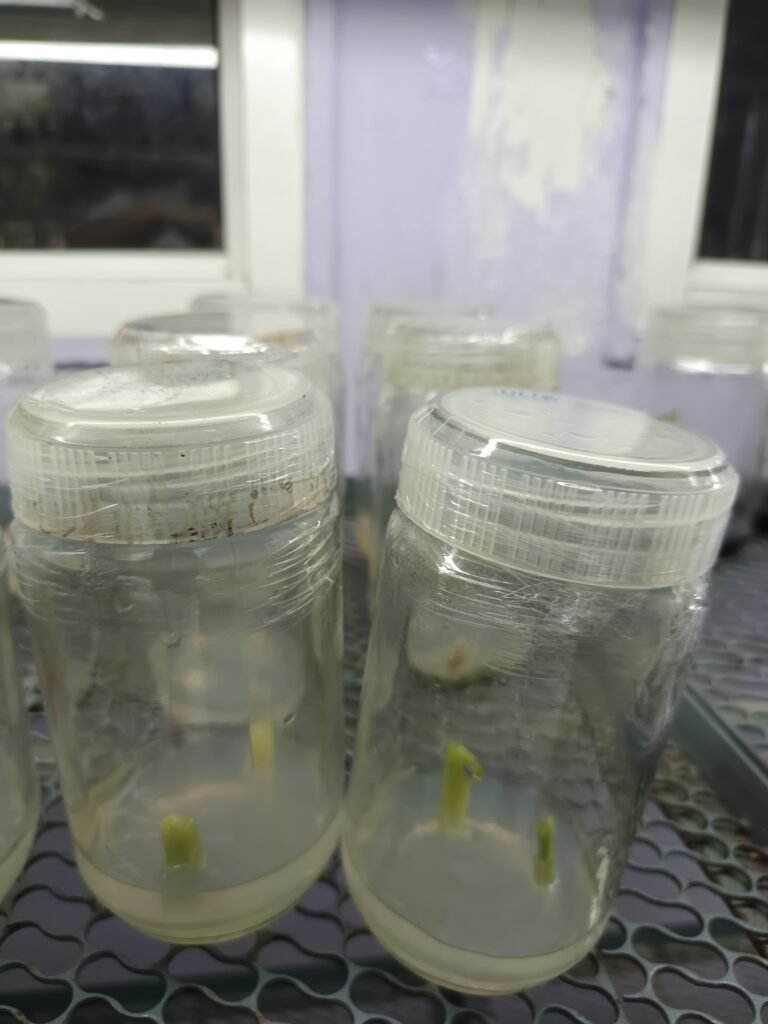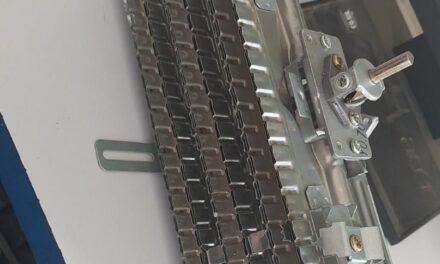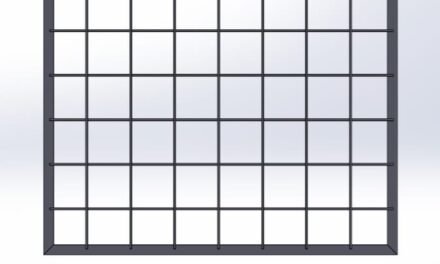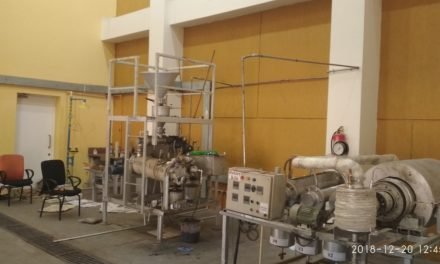INTRODUCTION :-
Napier grass (Pennisetum purpureum), also known as elephant grass, is a tall perennial grass widely cultivated as a high-yielding fodder crop for livestock. It is valued for its fast growth, high biomass production, palatability, and nutritional quality. Traditionally, Napier grass is propagated through stem cuttings and root splits. However, these conventional methods are slow, prone to disease transmission, and require large planting materials.To overcome these limitations, plant tissue culture has emerged as an efficient technique for the rapid, large-scale, and disease-free propagation of Napier grass. Through micropropagation, explants such as shoot tips, nodal segments, or meristems are cultured under sterile conditions on nutrient media enriched with growth regulators.
EXPLANT CAN USE :-
Nodal segments
Shoot tips / apical meristems
Leaf bases or immature inflorescences
STAGES :-
Preparation of Explant
Initiation
Shoot Multiplication
Rooting
Hardening/Acclimatization
MATERIALS :-
| Beaker | Surgical Blade |
| Conical flask | Autoclave Bag |
| Petri Plate | Scissors |
| Cotton Plug | Tissue Paper |
| Test Tube | Parrafilm Tape |
| Test Tube Stand | Distilled Water |
| Forceps | Sterile Distilled Water |
| Spatula | Culture Bottle |
| Measuring Cylinder | Scalpel |
CHEMICALS FOR STERILIZATION :-
| Liquid Soap |
| Savlon ( Dettol ) |
| Ethanol |
| Sodium Hypochlorite |
| Antibiotics |
CHEMICALS FOR MS MEDIA :-
| Macronutrients |
| Micronutrients |
| Vitamins |
| Iron Source |
| Mesoinositol |
| Sucrose |
| Agar |
| Hormones |
| HCl / NaOH |
PREPARATION OF MACRONUTRIENTS :-
| Macronutrients | Original Concentration mg/l | Amount of salt after multiplying original concentration by 20X, Solution Volume (250ml) |
| NH4NO3 | 1650 | 8250mg |
| KNO3 | 1900 | 9500mg |
| KH2PO4 | 170 | 850mg |
| MgSO4.7H2O | 370 | 1850mg |
| CaCl2.2H2O | 440 | 2200mg |
PREPARATION OF MICRONUTRIENTS :-
| Micronutrients | Original Concentration mg/l | Amount of salt after multiplying original concentration by 100X, Solution Volume (250ml) |
| H3BO3 | 6.2 | 155mg |
| MnSO4.4H2O | 22.2 | 557.5mg |
| ZnSO4.7H2O | 8.6 | 215mg |
| Na2MoO4.2H2O | 0.25 | 6.26mg |
| CoCl2.6H2O | 0.025 | 0.625mg |
| CuSO4.5H2O | 0.025 | 0.625mg |
| Kl | 0.83 | 20.75mg |
PREPARATION OF VITAMINS :-
| Vitamins | Original Concentration mg/l | Original Concentration multiplying by 1000X, Final solution volume (50ml) |
| Thiamine HCl | 0.1 | 5mg |
| Pyridoxin HCl | 0.5 | 25mg |
| Nicotinic | 0.5 | 25mg |
| Glycin | 2.0 | 100mg |
PREPARATION OF IRON SOURCE :-
| Iron Source | Original Concentration mg/l | Original Concentration multiplying by 400X, Final solution volume (50ml) |
| FeSO4.7H2O | 27.8 | 2780mg |
| Na2EDTA.2H2O | 37.3 | 3730mg |
PREPARATION OF MS MEDIA :-
| Materials | Final Volume ( 250ml ) |
| Macronutrients | 12.5ml |
| Micronutrients | 0.625ml |
| Vitamins | 0.625ml |
| Iron Source | 0.250ml |
| Mesoinositol | 25mg |
| Sucrose | 7.5gm |
| Agar | 2gm |
| Distilled Water | 100ml |
MESOINOSITOL :-
When we prepare 1 litre ms media then we will take 100mg mesoinositol.
SUCROSE (3%):-
When we prepare 1 litre ms media then we will take 30gm sucrose.
PREPARATION OF HORMONES:-
BAP Stock:– 100mg BAP in conical flask (250ml) dissolve with ethanol or 1M NaOH solution and BAP powder dissolve completely in solution and make final volume 100ml solution with Distilled water.
IBA Stock:- 100mg of IBA in conical flask (250) dissolve with ethanol or 1M NaOH solution and IBA powder dissolve completely in solution and make final volume to 100ml with Distilled water.
pH CHECK:- Prepare solution media pH range is 5.8 – 5.9 by using HCl or 1M NaOH.
Agar:- Take 8 gm agar powder and add in media ,mix with glass rod then in microwave the media for 14 minutes and agar dissolve completely in media.
STERILIZATION PROCESS :-
Autoclave the used media to sterilize it before disposal. Discard the used media from the culture bottle. Soak the empty culture bottle in chromic acid (for cleaning or decontamination) for 24 hours. After 24 hours, remove the culture bottle from the chromic acid and wash it with liquid soap. Then dry it in a hot air oven at 180°C for 12 hours. Then we have wrapped glassware in autoclave bag then put in autoclave with distilled water and culture media.
Autoclave work at high pressure and temperature ( 15 psi, 121°C) for 15 to 20 minutes and kill the microorganisms. After sterilization removed glassware from sterilizer. And placed in laminar air flow then when we use it, we will turn on UV – ray light for 1 hour.
METHODOLOGY :-
11 June 2025
1.Select mother plants ( Shoot tips, Nodal part ) that are young shoot tips disease-free, and have high-yield and desirable traits.
2. Cut the mother plant in desirable shape and placed dry tray.
3. Wash the cut explant in running water for 15 minutes.
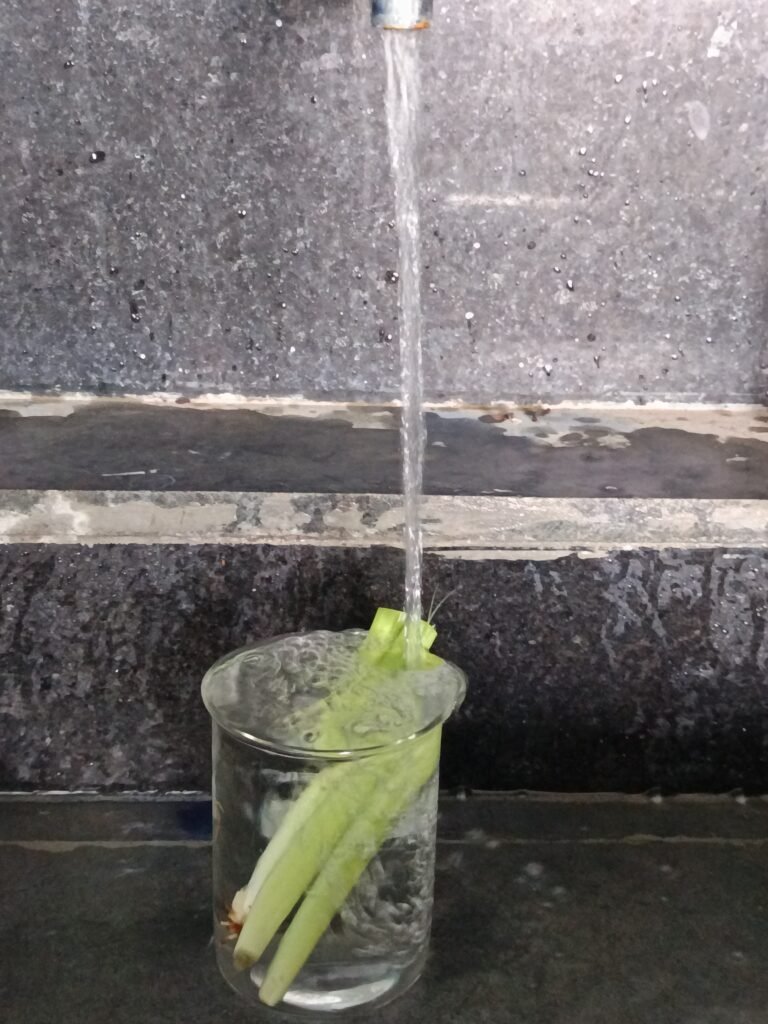
4.Handle the plant material with sterile gloves.
5. Then prepare total volume 300ml soap solution (30ml soap liquid and 270ml distilled water).
6. Wear glove hand and wash the plant material for 5 minutes.
7.Then remove the soap solution and placed in glass beaker.
8. Cut the material desirable size with the help of knife.
9. Then soak the material in savlon solution ( 3ml savlon and 300 ml distilled water) for 15 minutes.

10. Then wash the plant material from sterile distilled water 3 to 5 time in bottle beaker.
11. Prepare 4% sodium hypochlorite solution and taking sodium hypochlorite solution into a laminar air flow and soak the plant material in sodium hypochlorite solution for 20 minutes( for 1 jar 10ml sodium hypochlorite and 250ml sterile distilled water).
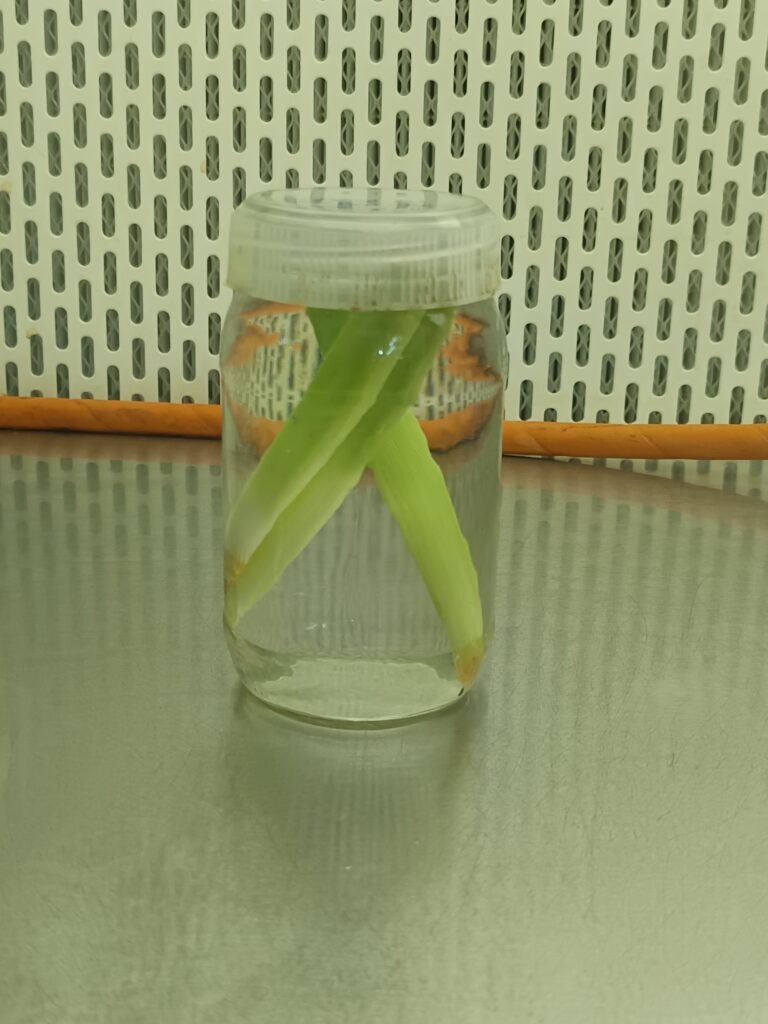
12. After 20 minutes then remove plant material from sodium hypochlorite solution and wash the plant material 3 to 5 times in sterile distilled water.
13. Then cut the plant material required culture bottle size with the help of knife on sterilized brown paper.
14. Prepare antibiotic solution using Cefotaxime antibiotic( 1ml antibiotic and 200ml sterile distilled water) and soak the plant material in this solution for 30 minutes. Using only fresh antibiotic solution.
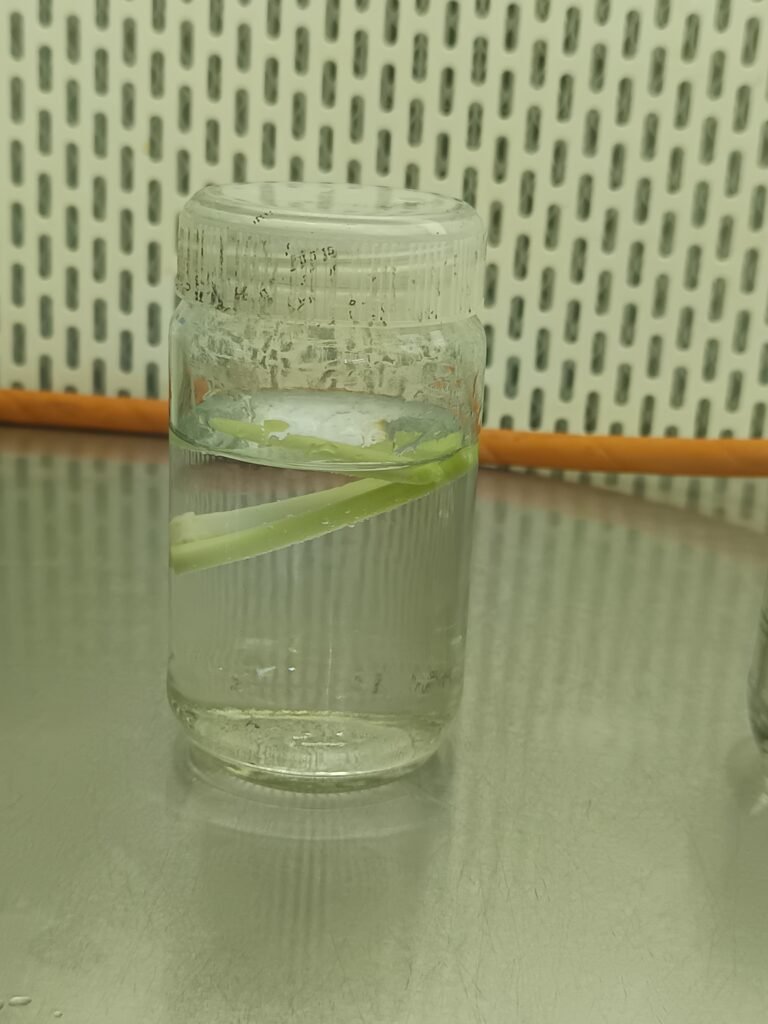
15. Then inoculate the plant material in culture medium( bottle beaker) and remove laminar air flow placed inoculate culture bottle at 24°C with photo periods of 6 to 7 hours light and 8 hours darkness for tissue culture sterile environment.
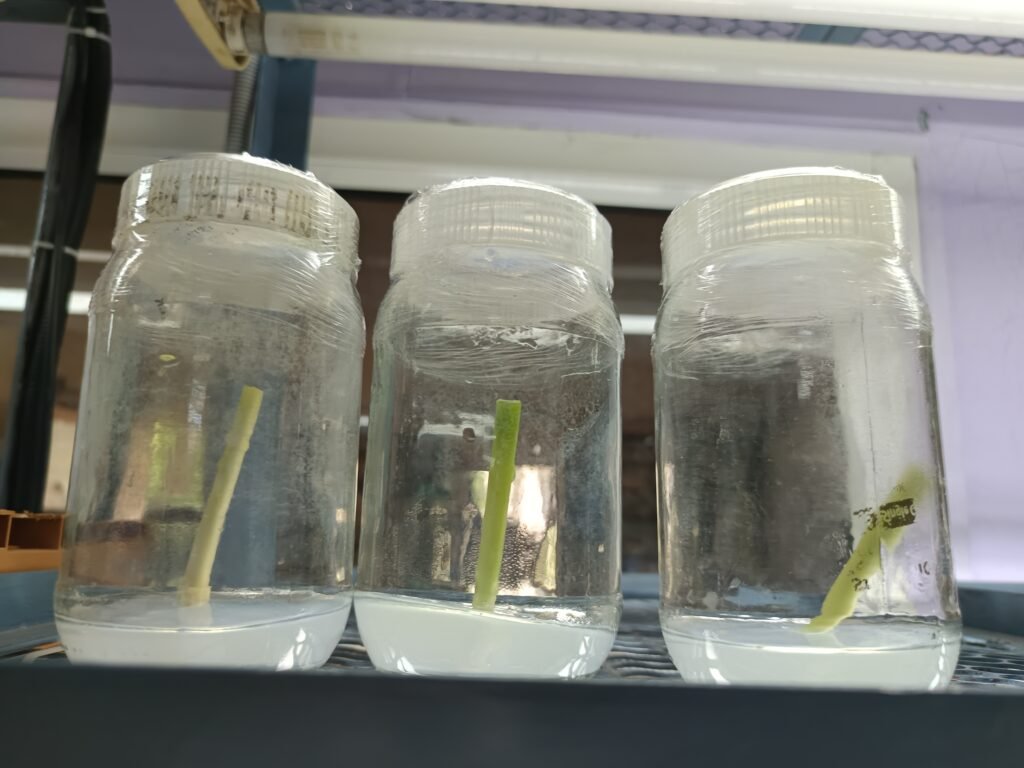
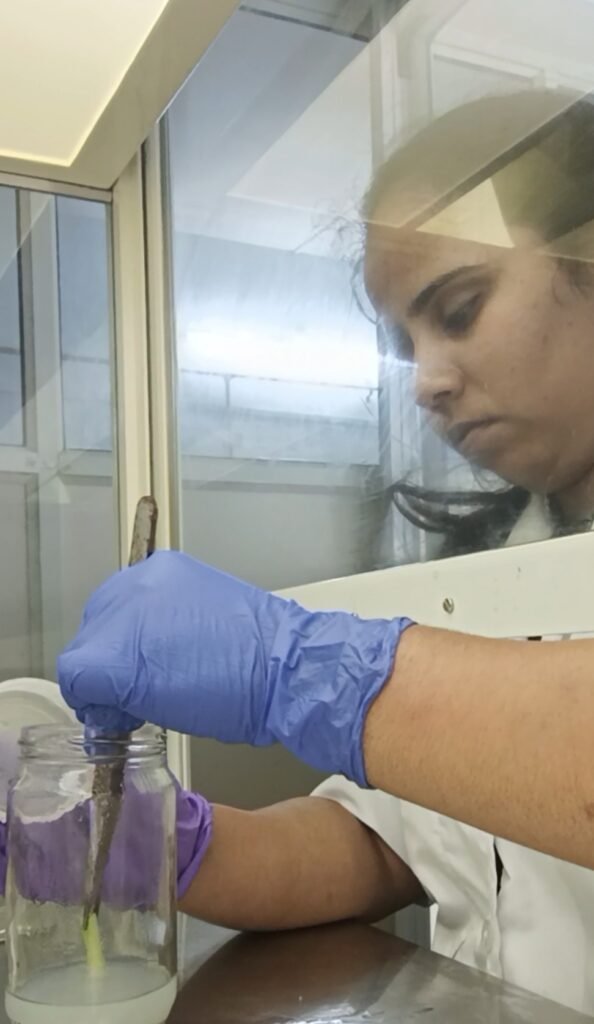
RESULT :-
After two to three days, the inoculated naipier grass explants showed no growth and were contaminated.
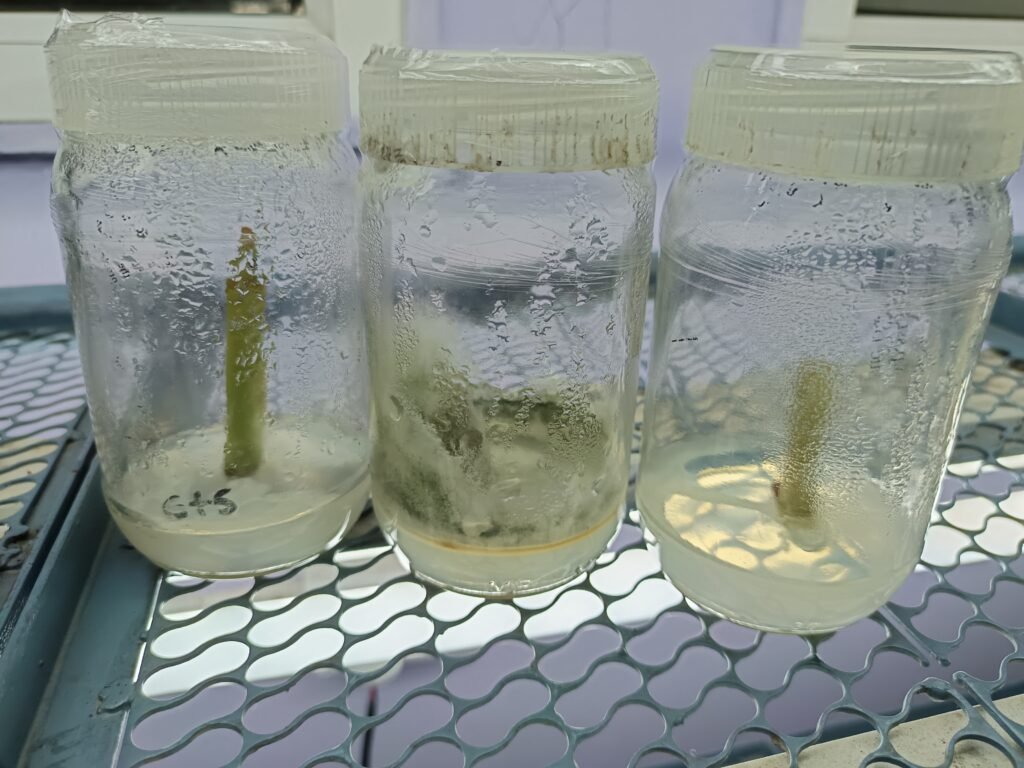
2 July 2025
I took a one-month-old plant, performed surface sterilization, and inoculated it onto MS medium.
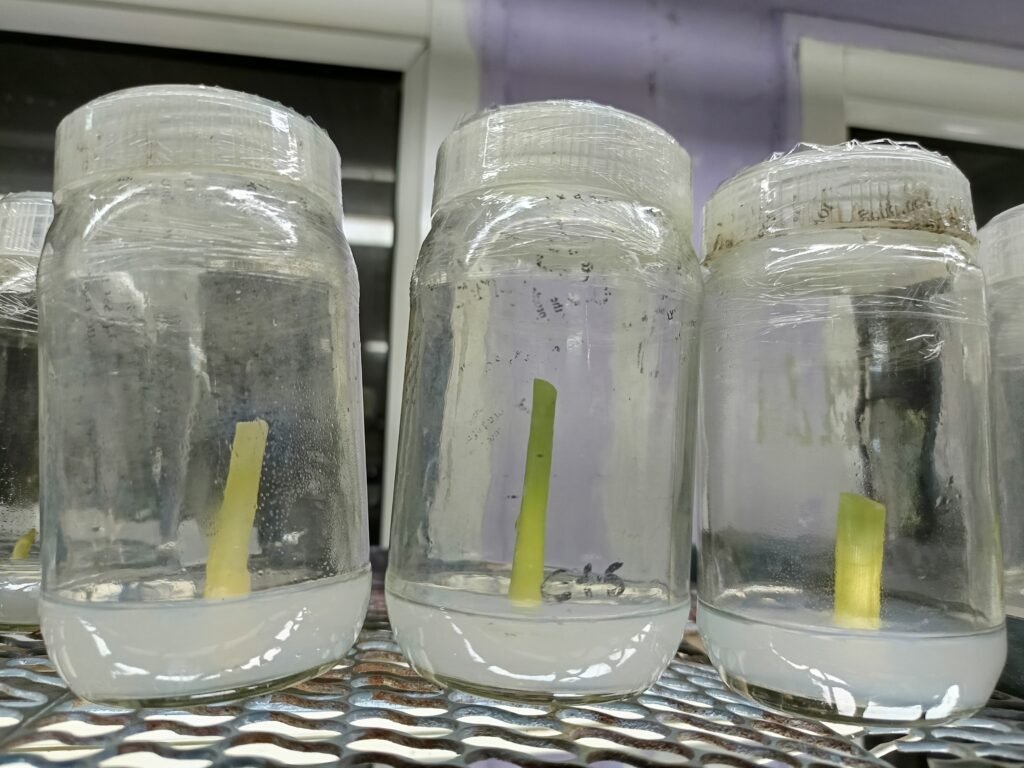
5 August 2025
After discussing with Dixit Sir, I grew Napier grass in a hydroponic setup and treated it with fungicide and UV light.
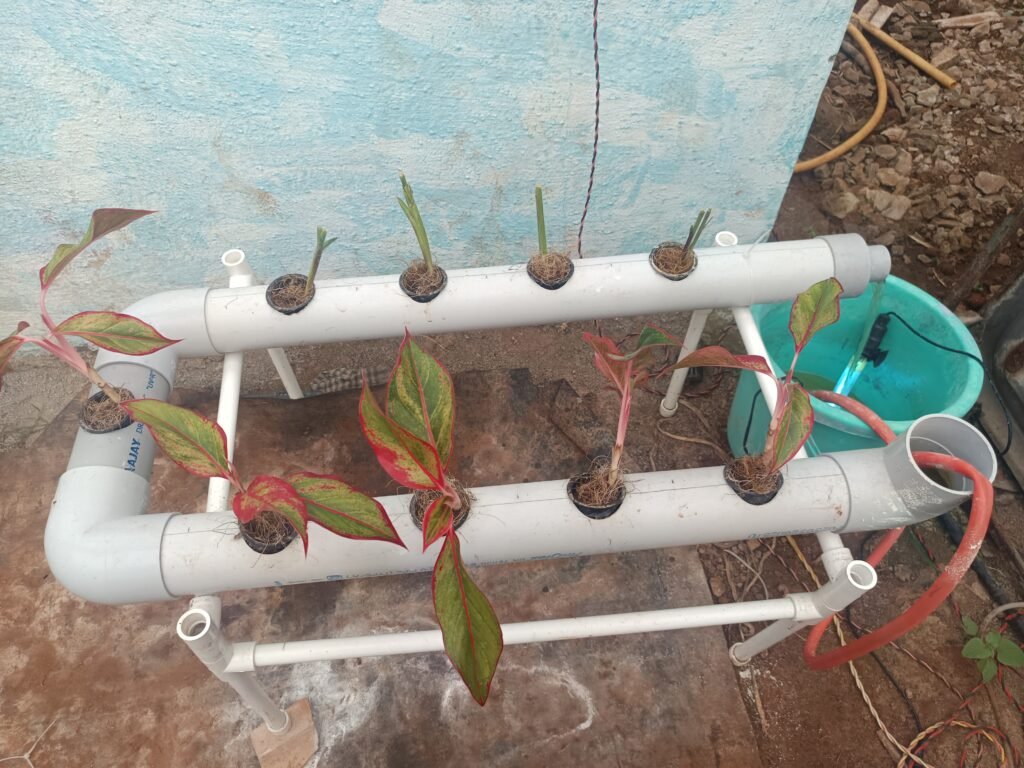
RESULT :-
Contamination appeared within 3 to 4 days after inoculation.
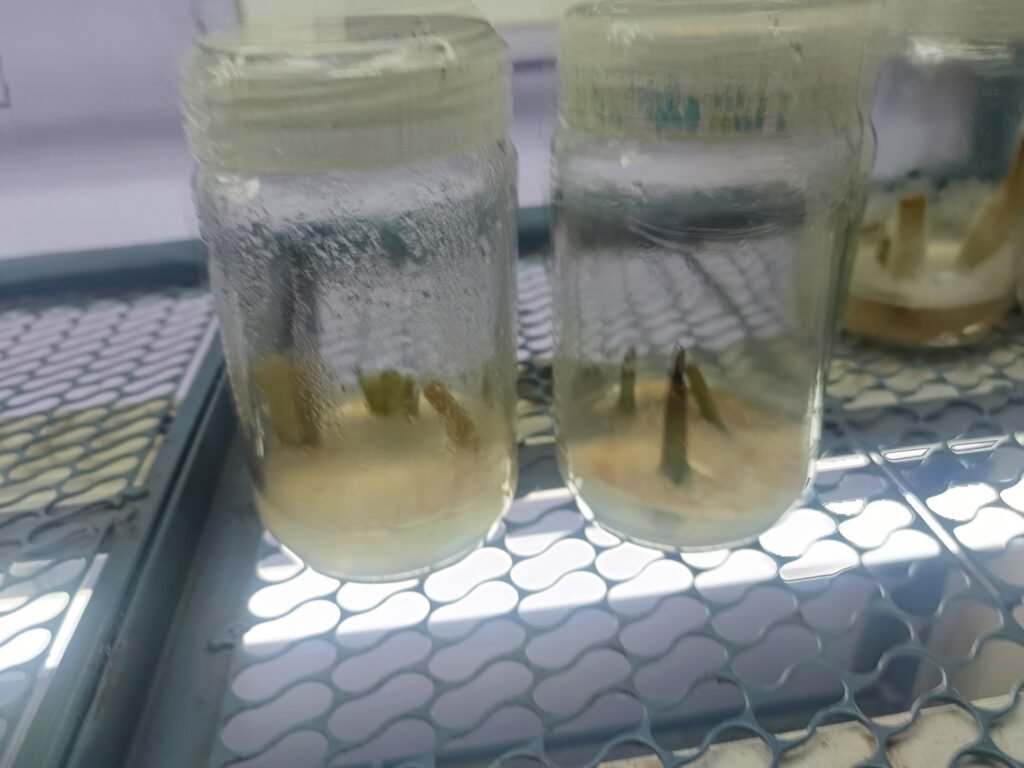
8 August 2025
I took the shoot tips of Napier grass and kept them in running water with UV light for 15 minutes. After that, I performed surface sterilization and inoculated it onto MS medium.
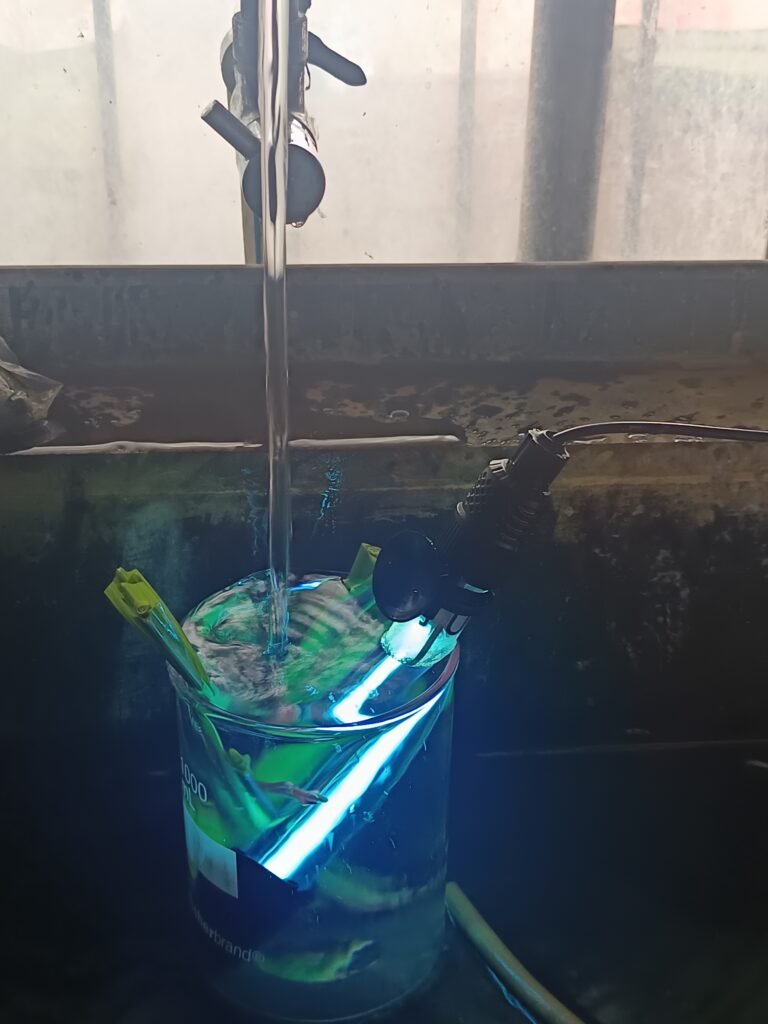
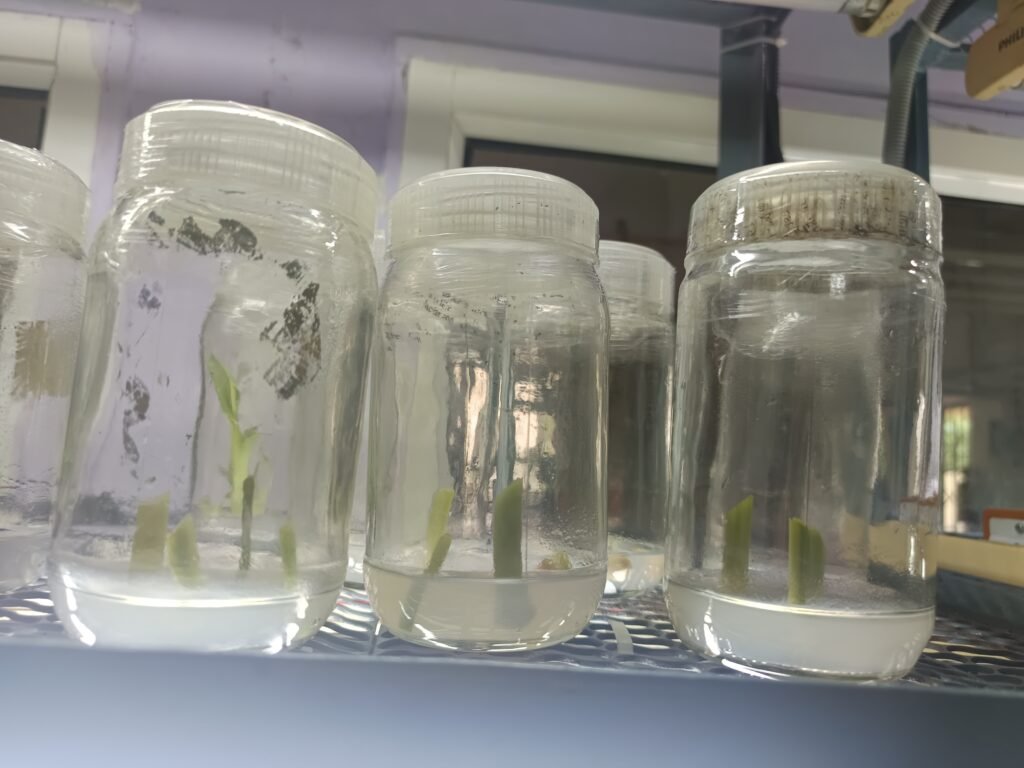
RESULT :-
Contamination appeared within 3 to 4 days after inoculation.
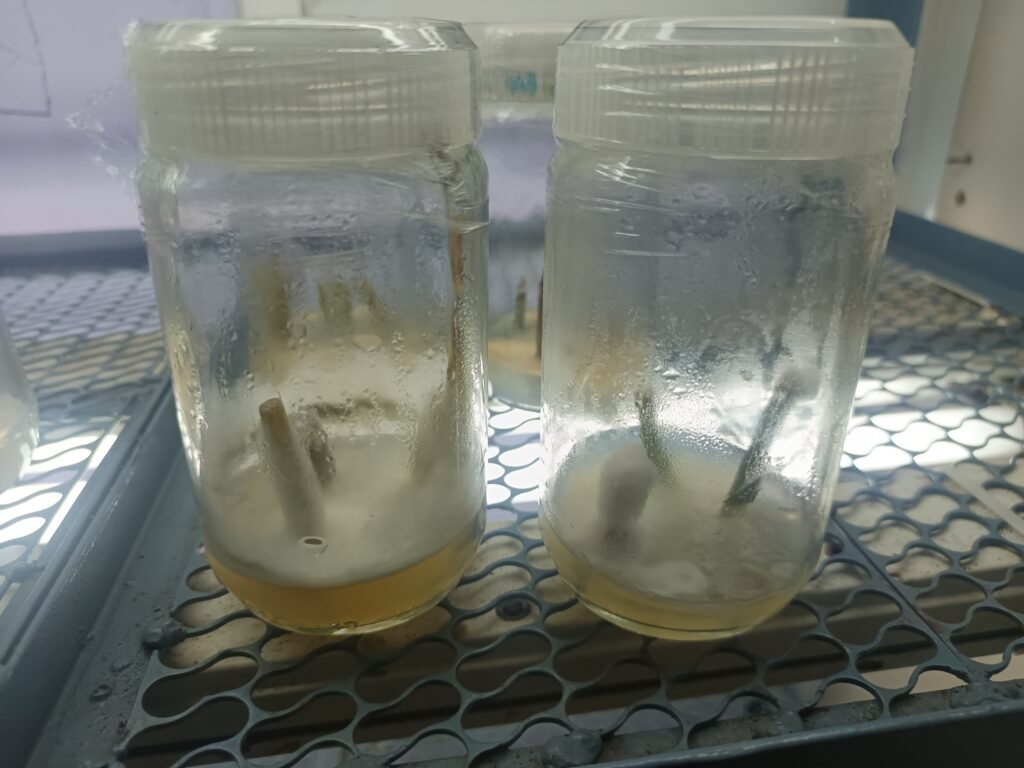
11 August 2025
I took a explant from a hydroponic setup, perform surface sterilization, and then inoculated it.
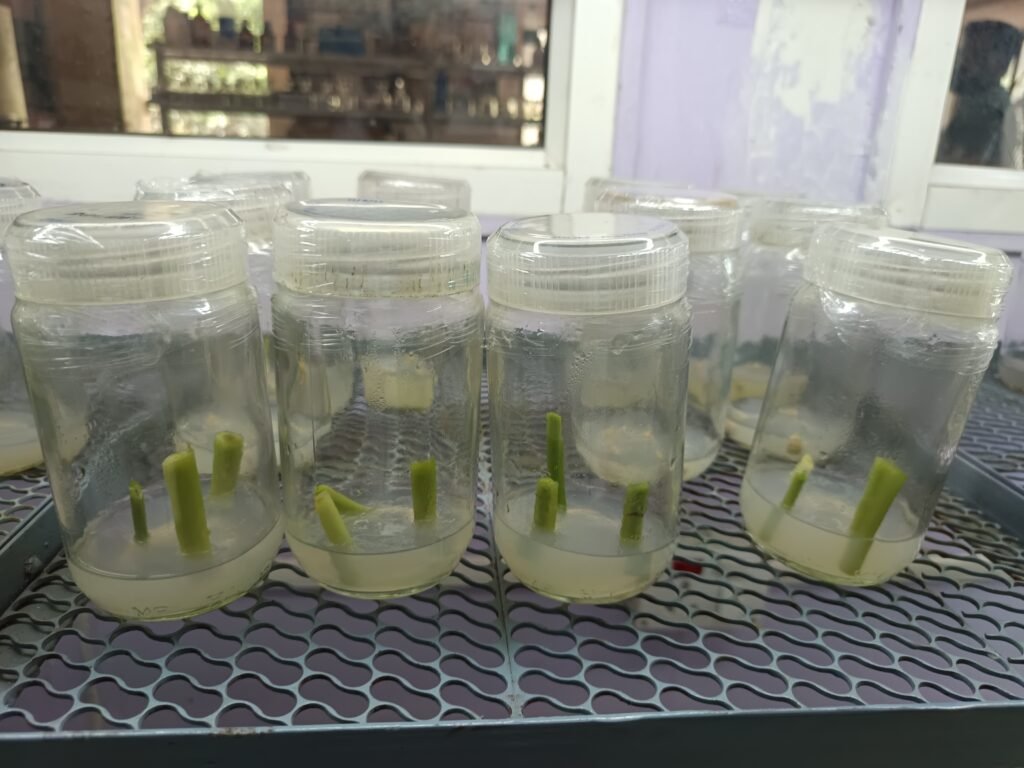
RESULT :-
Contamination appeared within 5 days after inoculation.
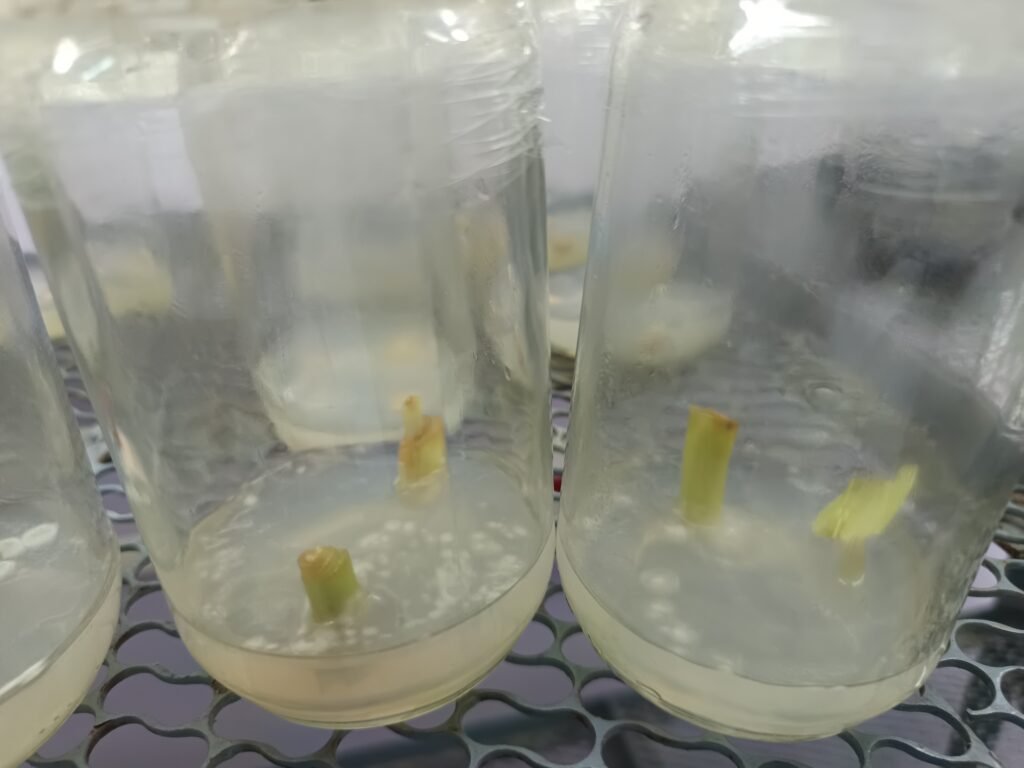
18 August 2025
I again took a explant from a hydroponic setup, perform surface sterilization, and then inoculated it.
